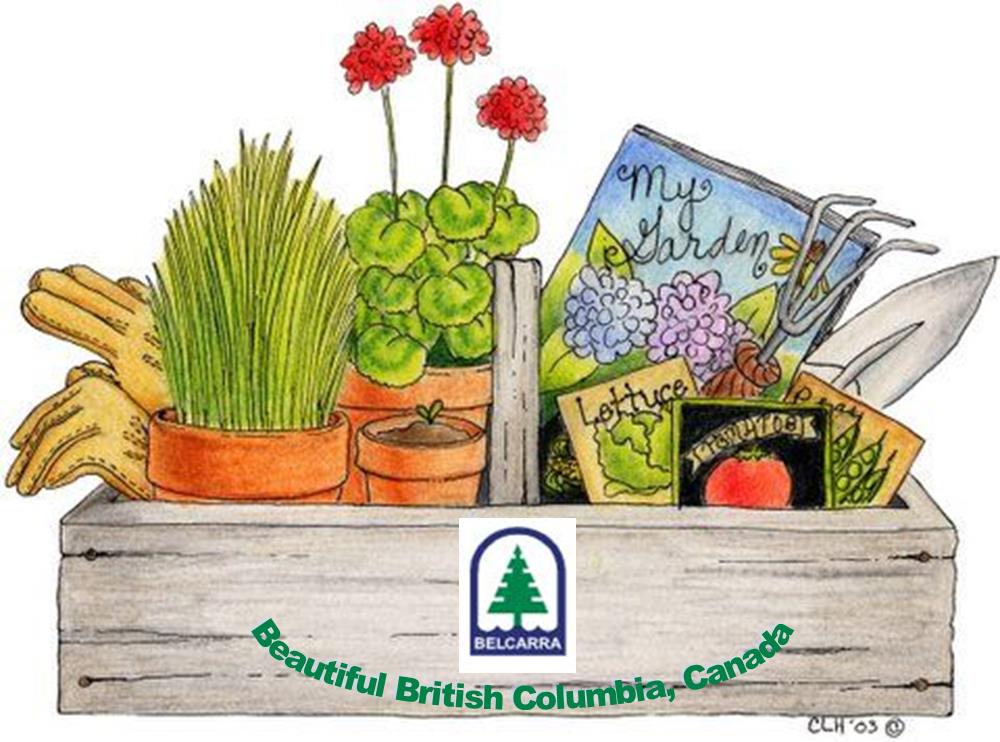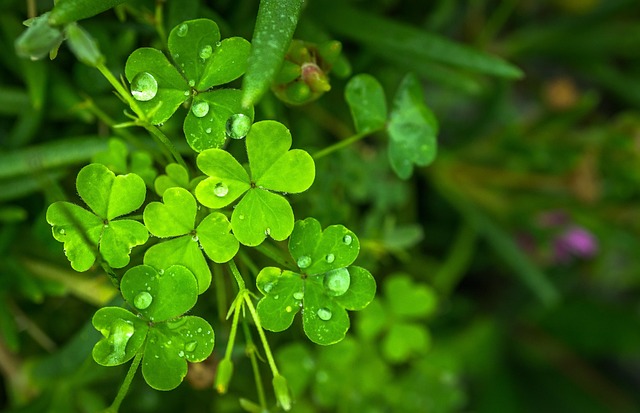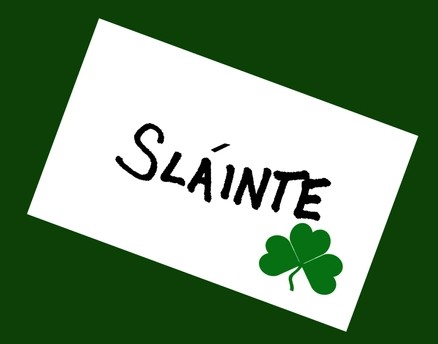Belcarra Garden Club
BC, Canada

Shamrocks
 |
-pixabay.jpg) |
Begosh and Begorrah (By Golly!)
‘Tis the time for wearing of the green and looking for that lucky four-leaf clover!
There are 300 species of clover (Trifolium); tri means three and folium means leaf. There’s no definitive answer to which clover is the “true” shamrock; however, researchers conducted surveys in 11 Irish counties in 1892 and the Irish National Press conducted a survey in 1988. Depending on the Irish county, the front runners were white clover and yellow clover, with red clover, black medick, and wood sorrel trailing behind. One distinction is that shamrocks are always 3-leafed. According to Dublin-based writer, Mary Mulvihill, it was the Irish Dept. of Agriculture in the 20th century that nominated the yellow clover (T. dubium) as the “official” species for commercial growers in Ireland.
Of course, one cannot go without mentioning the “lucky 4 leaf clover”, representing luck, faith, hope, and love. Supposedly, it is a 1 in 10,000 chance to find one! That is, unless you purchase Oxalis tetraphylla (also called O. deppei), the “iron cross” or lucky clover (which isn’t really a clover) which usually has 4 leaves.
If you check at garden shops or investigate online, there is an annoying amount of conflicting information regarding what is, or what is not, a true shamrock! It’s probably best to be flexible and just choose a plant you enjoy!
Chances are the “Shamrock” you purchase here is a small indoor plant in the genus Oxalis (possibly Oxalis regnelli). There are over 500 species of Oxalis, and they grow shallow roots from tiny bulbs. Many are also suitable for our West Coast climate. Oxalises usually have heart-shaped or triangular leaves (clover is always rounded) which may fold up at night or in excessive sun. Many have attractive flowers, for example, Oxalis purpurea has large, showy pink flowers. They seem to prefer being pot bound. They like bright indirect light, cool evenings and warmer days. Use a diluted fertilizer once or twice a month in the growing season. Keep the soil moist but not wet. Keep some species relatively dry for about a month while they are dormant.
As a note, you may also find clover “shamrocks” as indoor plants. They need a very sunny spot and to be kept moist. Redirect any root runners back into the soil, or they will die. Clover needs a winter rest period in a cool, dark spot. Clover grows readily outside and is an important cover crop as it helps increase soil nitrogen levels. It also makes livestock feed more nutritious and is a good nectar source for pollinators. There are over 300 species of clover.
More ("possible") Facts:
Dissident Irish Volunteers wore shamrocks in the 1700s, and so the British forbid Irish regiments to wear them. On March 17, 1900, during the brutal Boer War, Queen Victoria decided to allow the “Irish Guards” to wear shamrocks again. This tradition continues today, and the Royal family makes an annual presentation of shamrocks to the regiment (in 2014 it was Kate Middleton).
It is notable that to many, wearing a sprig of shamrocks is a symbol, just like the poppy, to commemorate the Irish soldiers who lost their lives in the Anglo-Boer War.
Ireland’s Taoiseach (prime minister) has annually presented a bowl of shamrock to the President of the USA on March 17 since 1952! (Hmmm… we’ll see if this continues in 2025!)
Historically, people used shamrocks boiled in pork fat to treat inflammation.
Here’s my favourite! One St. Patrick’s Day tradition is “Drowning the Shamrock”. It involves dunking a bunch of the leaves in the last shot of whiskey on March 17!

Related Links:
My own St. Patrick's Day teacher's resource page:
http://www.teacherwebshelf.com/holidaylinks/links/links-winter/winter-stpatricks.htm
Shamrocks and their History:
History of the shamrock (with links to the Irish surveys that perhaps tell the “true story”!)
https://www.smithsonianmag.com/arts-culture/no-one-really-knows-what-shamrock-180954578/
Shamrocks
https://goodfoodireland.ie/blog/a-little-history-of-the-shamrock/
More interesting history tidbits on the Shamrock
https://www.myirishjeweler.com/ca/guides/jewelry-styles/shamrock/
Shamrocks in war history
https://www.vox.com/2015/3/17/8227727/shamrock-boer-war
Shamrocks versus 4-leaf clovers
https://www.irishfamilyhistorycentre.com/article/the-difference-between-irish-shamrocks-and-four-leaf-clovers/
https://www.thepioneerwoman.com/holidays-celebrations/a42791777/shamrock-vs-clover/
https://ipm.missouri.edu/meg/2019/3/oxalis/
Oxalis:
Oxalis is a large genus with over 500 species. They are often known as wood sorrels, not to be confused with true sorrels in the genus Rumex. The leaves of many species can be eaten raw or cooked, in small quantities, and have an acidic taste.
Some species are considered invasive in parts of the USA, namely creeping wood sorrel (Oxalis corniculata) and buttercup Oxalis (Oxalis pes-caprae).
13 of the best Oxalis to grow in your garden: https://gardenerspath.com/plants/herbs/best-oxalis-varieties/
Oxalis – the St. Patrick’s Day plant https://farmfoodfamily.com/oxalis-houseplant/
Common Wood sorrel (Oxalis acetosella) grows wild all over the Northern hemisphere and has many synonyms.
Care: https://worldoffloweringplants.com/oxalis-acetosella-common-wood-sorrel/
Good Luck Plant or Iron Cross Plant (Oxalis tetraphylla, also called Oxalis deppei) This plant has 4 leaflets and the dark colored inside resembles a cross.
Care: https://farmfoodfamily.com/oxalis-triangularis-plants/
Care: https://gardenseeker.co.uk/indoor-plants/oxalis_deppei_tetraphylla.htm
Redwood sorrel or Oregon sorrel (Oxalis oregana): is native to Douglas-fir and coast redwood forests of western coastal North America. It has pinky white flowers.
Care: https://www.gardeningknowhow.com/ornamental/flowers/redwood-sorrel/growing-redwood-sorrel.htm
Clover:
There are about 300 different species of clover. It is mostly known as a cover crop, as it helps increase soil nitrogen levels. It also makes livestock feed more nutritious and is a good nectar source for pollinators.
All parts of a clover plant are edible, either raw or cooked. Clover tea is said to help a fever, clean the lymph system, and even settle an upset stomach!
51 types of clovers with pictures
https://farmfoodfamily.com/types-of-clovers
Indoor Clover plants, care and uses
https://www.gardenersnet.com/hplants/clover-houseplant.htm
Care: Growing clover indoors
https://www.gardeningknowhow.com/ornamental/groundcover/dutch-clover/potted-clover-plants.htm
How to find a four-leaf clover
https://www.gardeningknowhow.com/lawn-care/lawn-substitutes/white-clover/four-leaf-clovers.htm
Growing Clover Lawns: 15 things to know
https://www.thespruce.com/all-about-clover-lawns-6362145
Other species sometimes confused with clover:
Sweet Clover (Melilotus officinalis): This is not actually a clover but is in the same pea family (Fabaceae). It has been used as a tea and medicinally for many ailments as varicose veins and inflammation (without scientific proof).
https://www.webmd.com/vitamins/ai/ingredientmono-253/sweet-clover
https://www.healthbenefitstimes.com/sweet-clover/
Black Medick or Hop Clover (Medicago lupulina) is another member of the pea family. https://www.gardeningknowhow.com/edible/herbs/black-medic/growing-black-medic-herbs.htm
Alfalfa (Medicago sativa), also called lucerne, is another member of the pea family.
https://www.britannica.com/plant/alfalfa


